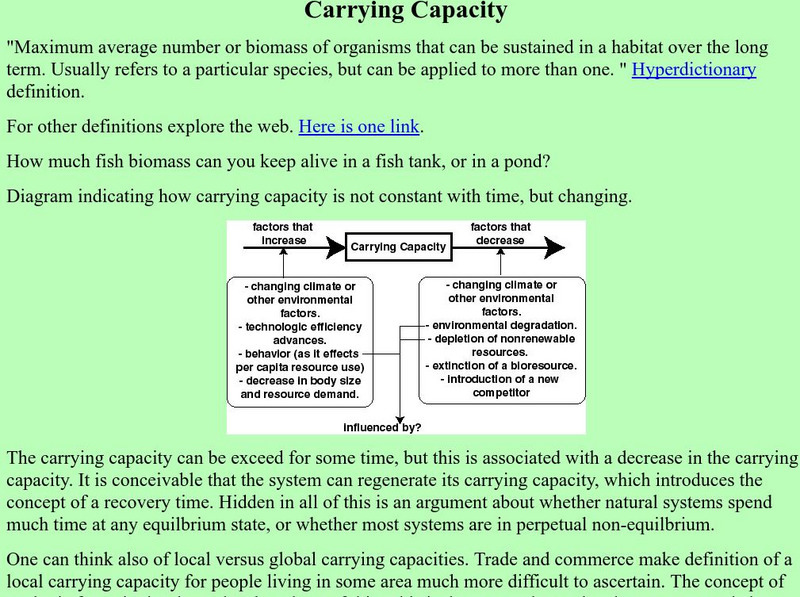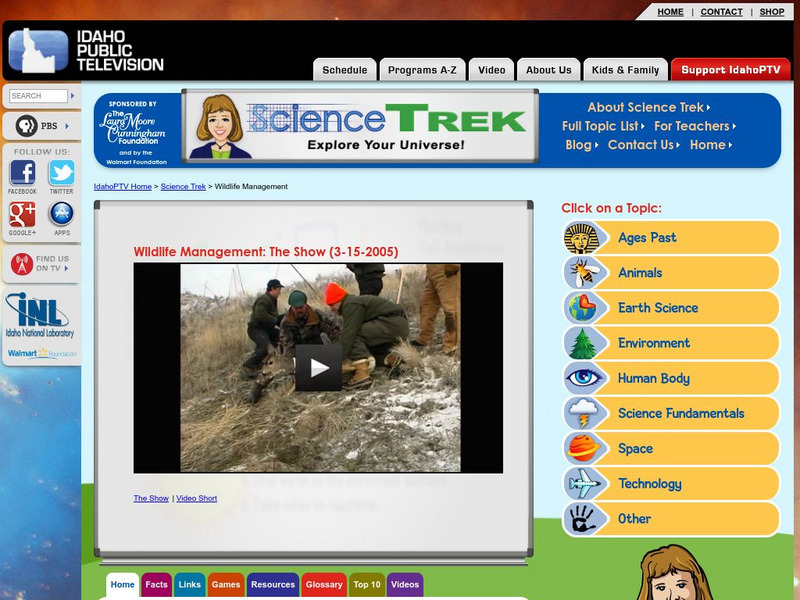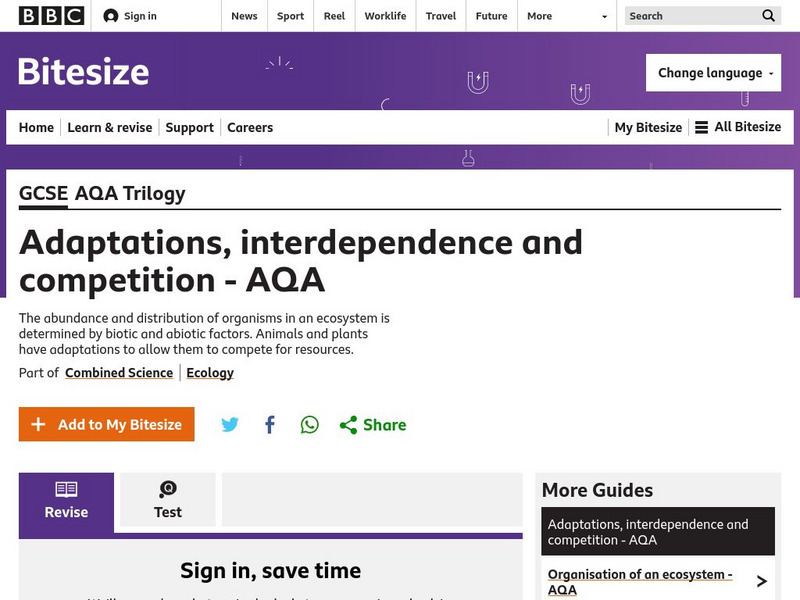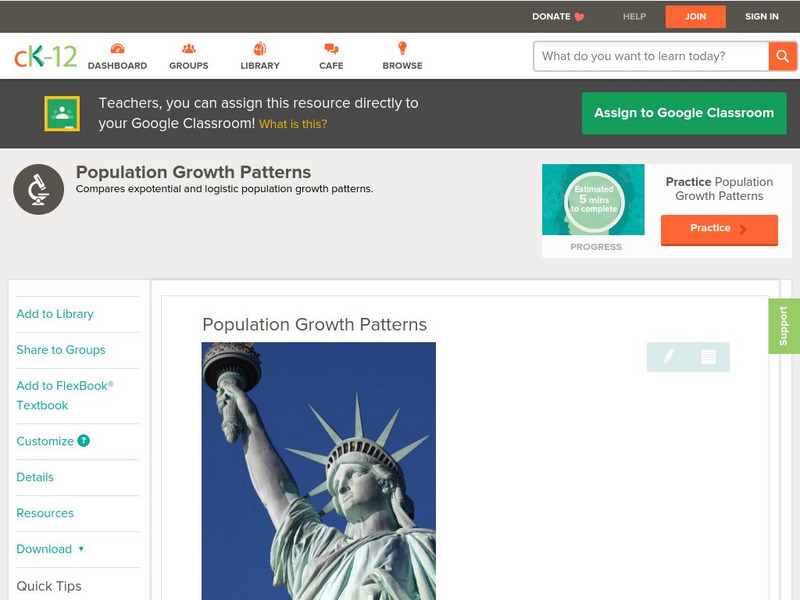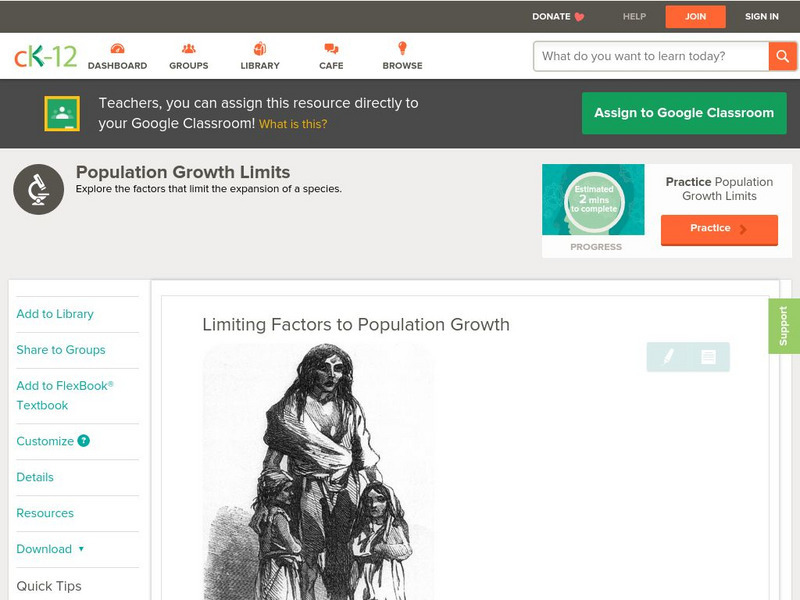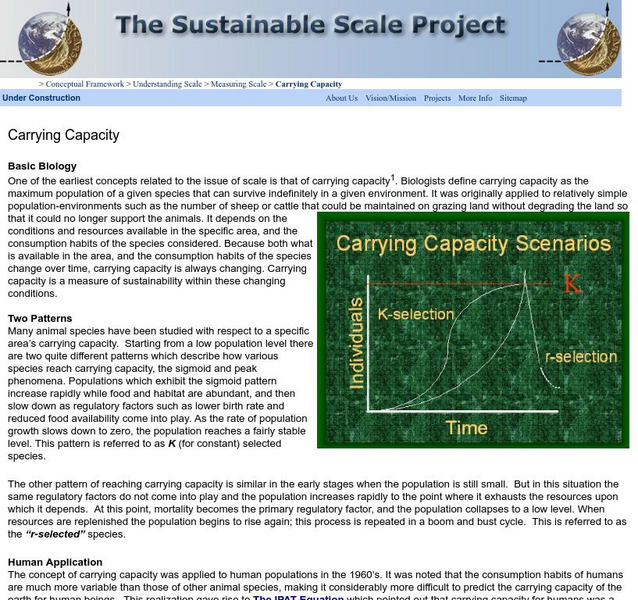Other
Clemson Cooperative Extension: The Basics of Population Dynamics [Pdf]
Students learn the many ecological factors that affect the carrying capacity for populations of wild species.
Annenberg Foundation
Annenberg Learner: Journey North: A Global Study of Wildlife Migration and Seasonal Change
Here you can view maps showing the migratory paths of dozens of animals across the northern hemisphere, report a sighting of one of the animals listed in the database, and much more.
Concord Consortium
Concord Consortium: Population Curve: Significance of Breakpoints
Learn about three models of population growth: linear, exponential, and logistic. Then conduct a population experiment to see how populations can work in the real world, and see how linear graphs can help simplify complicated ones.
Texas Instruments
Texas Instruments: Glencoe Middle School Science: Biodiversity and Ecosystems
Students will conduct a field investigation to learn about the environment. They will observe biotic and abiotic factors of an ecosystem. Students can use the CBL 2 and a temperature probe to collect data and a graphing calculator to...
Texas Instruments
Texas Instruments: Ecology Vocabulary
This StudyCards stack enables students to review the vocabulary used in studying ecology.
University of Nebraska Omaha
University of Nebraska at Omaha: Carrying Capacity
Read through some case studies, and study data that shows how wildlife populations react when they reach carrying capacity.
NC State University
Nc State University: Population Dynamics
Students will understand the ecological concepts behind population dynamics of wildlife species.
Science Education Resource Center at Carleton College
Serc: Goldenrod Gall Investigation
In this life science field investigation students study goldenrod gall population.
Science Education Resource Center at Carleton College
Serc: Mn Step: Snails: Population Calculation in an Aquatic Environment
A 3-day field investigation where learners visit an aquatic area and collect snails. These are examined, the species identified, and the body parts and characteristics studied and recorded. Then the snails are returned to their homes....
TED Talks
Ted: Ted Ed: How Poachers Became Caretakers
In his home of Namibia, John Kasaona is working on an innovative way to protect endangered animal species: giving nearby villagers (including former poachers) responsibility for caring for the animals. [15:47]
PBS
Idaho Ptv: Dialogue for Kids: Wildlife Management
A collection of facts and links for learning about wildlife management. The facts cover what wildlife management is, the job of a wildlife manager, biodiversity, predators and prey, land capacity, habitat, and endangered animals. Other...
American Geosciences Institute
American Geosciences Institute: Earth Science Week: Sea Level and the Terrapin
Students build a model ecosystem to simulate the life and limiting factors of the Terrapin turtle.
BBC
Bbc: Gcse Bitesize: Adaptations, Interdependence and Competition Aqa
The abundance and distribution of organisms in an ecosystem is determined by biotic and abiotic factors. Animals and plants have adaptations to allow them to compete for resources.
CK-12 Foundation
Ck 12: Population Growth Patterns
[Free Registration/Login may be required to access all resource tools.] Students will identify the definition of carrying capacity and analyze other types of growth patterns of a population and relate these to the population dynamics of...
Concord Consortium
Concord Consortium: Dam Removing: Changes in the Environment Affect Population
What happens to a population when the environment changes? Students remove a dam that divides an ecosystem to illustrate the effects of environmental changes. Students observe and collect data as the grass and then the rabbit populations...
Concord Consortium
Concord Consortium: Dam Building: How Changes in Environment Affect Population
In this simulation, students build a dam in the middle of a field, dividing an ecosystem in half to illustrate the effects of environmental changes. They watch and collect data as the grass and then the rabbit populations in that region...
Other
Wild Finder: Mapping the World's Species
The World Wildlife Fund has created a searchable database containing thousands of species. Users can search by both species and location. Results are organized by their scientific name and include the common name, class, their threatened...
CK-12 Foundation
Ck 12: Life Science: Population Growth Patterns
[Free Registration/Login may be required to access all resource tools.] What does population growth mean? You can probably guess that it means the number of individuals in a population is increasing. The population growth rate tells you...
CK-12 Foundation
Ck 12: Life Science: Limiting Factors to Population Growth
[Free Registration/Login may be required to access all resource tools.] For a population to be healthy, factors such as food, nutrients, water and space, must be available. Limiting factors are resources or other factors in the...
TED Talks
Ted: Ted Ed: Tracking Grizzly Bears From Space
Using NASA satellites, scientists track the shifting, interrelated patterns of grizzlies and plants. David Laskin explains how this data can help protect the threatened bears. [4:15]
Other
The Sustainable Scale Project: Carrying Capacity
Students study carrying capacity, a measure of sustainability within changing conditions inside ecosystems.
American Geosciences Institute
American Geosciences Institute: Earth Science Week: Mapping a Refuge
An observation-based investigation for students while visiting a national wildlife refuge.
Alabama Learning Exchange
Alex: Wildlife Math
This integrated lesson is the result of collaboration between Chip Blanton, a wildlife management teacher, and Greg Pendergrass, a math teacher (Ft. Payne High School). Learning to manage wildlife requires an understanding of planting...
Khan Academy
Khan Academy: Ap Biology: Ecology: Population Ecology
Practice exercise on population ecology.


![Clemson Cooperative Extension: The Basics of Population Dynamics [Pdf] Handout Clemson Cooperative Extension: The Basics of Population Dynamics [Pdf] Handout](http://content.lessonplanet.com/resources/thumbnails/410022/large/bwluav9tywdpy2symdiwmduymc0yntu1ms1wzw1pdgeuanbn.jpg?1589984835)




